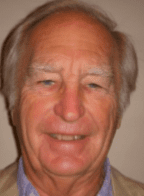A brief profile of John Fisher

John has been a Bayside resident since he went to Brighton Grammar School as a 14-year-old and has lived mostly in Brighton ever since.
When asked about his first job, he casts his mind back to moving milk churns at a dairy many years aged six where unfortunately he became the first victim of globalisation when the creation of the EU caused the subsidies to stop and he lost his job.
From there he graduated to general roustabout working in the back rooms of Myer.
His path to architecture began when he started his studies at RMIT – with part-time work at architects Bates, Smart & McCutcheon – later going on to complete his course at Melbourne University. From there it was a cadetship with the Commonwealth Department of Works and the Department of Housing and Construction, specialising in hospitals such that he was posted to the Department of Health in the UK for 15 months to learn more about designing hospitals and public buildings.
Returning to Melbourne, he found himself employed by the Victorian Treasury, insuring that projects worked, and the financials were sound, and was involved in a number of Public Private Partnership projects. Eventually he was designated Director of Assets, at which time, John says, he realised it was the right time to move on and next found himself undertaking property development with John Holland and, later, Becton. Before long, he was ready to go out on his own, entering the unique field of geo-spatial information systems (the example he gives is Google Maps or the government Land Channel that contains a wide range of property information). To make the point, he asks: Did you know, for instance, that every dairy cow has a chip and is tracked to monitor its potential exposure to diseases? John retired in 2000.
In retirement, by way of diversification, John was Director of Basketball Stadiums of Victoria, a board member at Fairway Hostel and is today, he says, the oldest patrolling lifesaver on the Bay (at Dendy Street beach), still having to run and swim 50 metres to maintain his Bronze Medal. But perhaps his most unique qualification is that he was once Canberra’s High Commissioner to Papua New Guinea (for two days), largely because in the temporary absence of the official commissioner, he was the most senior Commonwealth Officer on-site.

